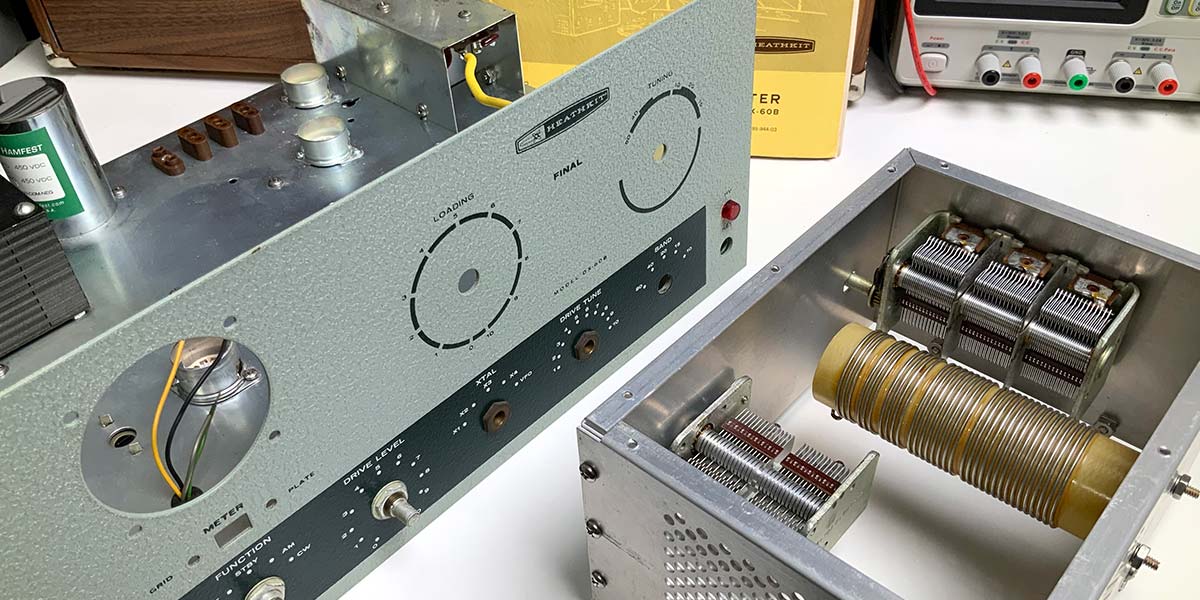It’s a cliché, but given a chance to do it all over again, aren’t there things you’d change?
To make the question more manageable, let’s limit the domain to electronics.
For example, maybe you would have saved up to buy that transceiver you really wanted instead of settling for that cheap rig that always died in the middle of an exchange.
Or, perhaps you built that full-size 20 meter beam instead of a compact version, knowing full well that it was more susceptible to high winds. Or, maybe you wish that you would have taken a few engineering courses in college instead of those humanities electives.
I’ve got a list of should-haves and could-haves, but most are out of reach because of time — you can’t step into the same river twice, so the over-quoted saying goes. But once in a while, an opportunity to revisit the past and make things right presents itself. And you have to go for it.
Case in point. My first ham radio rig was a HeathKit DX-60B HF transmitter, named after the 90W 6146B final amplifier tube. I assembled the rig when I was 11, exactly following the instruction book and marking off the small boxes with satisfying checkmarks with my No. 2 pencil.
Once complete, the rig was a workhorse. It was tough as nails. Although I used to tune the amplifier by the brightness and color of the plate, that transmitter lasted well over a decade. I regrettably sold the transmitter to a fellow ham, who put several more good years on the unit.
Thing was, that DX60B built to spec was far from perfect. The power supply wasn’t fused and wasn’t designed to provide the full B+ to the final amplifier. The sheet metal screws used throughout the kit were slotted (as opposed to Philips) and the metal oxidized after only a year or so. A hole on the cage to the final amplifier stripped after I swapped out the first 6146B tube.
The main rotary switch which, for some reason, went from off to tune to standby, arced and carbonized after about two years. And then there’s the use of stiff, solid wire from the tank circuit to a fragile ceramic wafer on the main switch. Finally, there was the flimsy RCA connector instead of an SO-239 female coaxial connector for the main RF output.
Most of these and other shortcomings weren’t apparent to me with the unassembled kit on my workbench. Had they been, I’d have used different hardware, added a fuse and relay or two, and, in general, upgraded the kit before starting the build. Improvements after the fact are always messy and time consuming.
So, where is this all headed? Well, in early 2021, I found a NOS (New Old Stock) HeathKit DX-60B on eBay. Although I paid considerably more than the list price of $125 for the kit in 1967, I bought it. From the photo, you can see the pristine tank circuit and front panel about a third into the build.

HeathKit DX-60B, circa 1967, under construction in 2021.
On this second time around, I did my best to address all the shortcomings with the kit. I didn’t bother wiring the two tube sockets used for AM, but used one chassis punch-out for a HV relay to save that main switch and the other to mount a fuse holder. I tossed the slotted screws and used corrosion-resistant Philips screws throughout the kit. I mounted an SO-239 on the output and use silicon-jacketed flexible stranded wire on the output tank circuit. I also used fasteners on the output cage to avoid the inevitable stripped cage top.
In the end, it was the DX-60B that I always wanted. Was the time and cost worth it? You bet. How many times in life do you get to do it all over again?
Fifty years later, I’m the proud owner a new and improved DX-60B, which looks just fine sitting next to a Drake 2B that I recently refurbished. Making a contact on that rig with just a handful of crystals and a straight key is like stepping back in time, even if only for the duration of a QSO.


